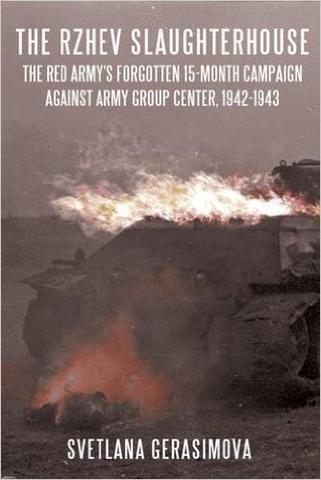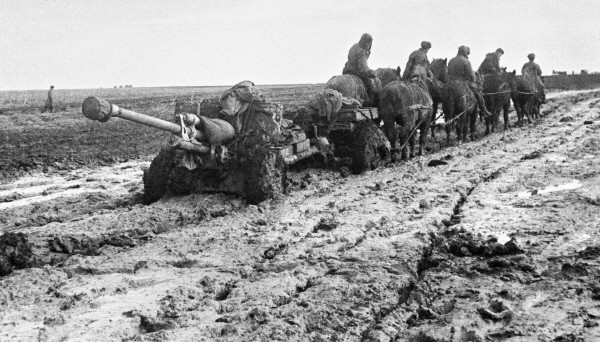The Rzhev Slaughterhouse

The Battle of Rzhev was a fifteen-month campaign that took place during World War II. During these battles the Red Army sought to not only evict German forces from a central position not far outside of Moscow, but also eliminate the bulk of Army Group Center. These battles formed a campaign so colossal that in a number of metrics outdid the fighting at Stalingrad. However, there is much controversy surrounding the Rzhev battles.
As such, Svetlana Gerasimova's The Rzhev Slaughterhouse seeks to "lay out the history of combat operations in 1942 and early 1943 on the central - the Moscow - axis of the Soviet-German front, taking into account the facts and documents known to the author at the current time, so the reader themselves can determine the truth of one viewpoint or the other." Within this larger goal the author also seeks to either answer or bring us closer to answering key questions such as; Why was one of the greatest battles of the Second World War consigned to oblivion in the Soviet Union? Why were the forces of the German Army Group Center in the Rzhev salient not encircled or destroyed in spite of repeated Soviet efforts? Who let the Germans withdraw from the Rzhev salient early in 1943? Is there justification for blaming Marshal of the Soviet Union G.K. Zhukov for these failures? What impact did this fifteen-month campaign have on the Soviet-German war? There are other questions and issues raised in this superb publication but suffice it to say that the author not only meets her objectives but has done an enormous service to those of us interested in this phase of the Second World War.
The Rzhev Slaughterhouse is well organized in seven chapters that set the stage for the battle, describe its five most significant phases, and examines the battle's results. Several dozen appendices, eight color maps, twelve tables, and dozens of photographs (the majority unique to this book), provide ample support to the author's analysis and do much to bringing this extroardinarily bloody battle to life. In terms of organization one of the book's numerous strengths is in the way each chapter sets the stage for its contents; describing the battlefield (as it shifted over time), the strategic importance of combat operations at that time, the state of the German defenses, the Red Army's preperations, and the correlation of forces. In addition, each chapter cogently covers the combat operations, analyzes reasons for success and failure and discusses attendant controversies - including toward answering the central questions driving the author's work. Finally, each chapter is easily digestible within a single half-hour or so sitting which makes the reading experience that much more enjoyable.
Gerasimova takes great pains to ground her analysis in facts, and address controversies within the battles to which they most directly applied. For instance, chapter two covers the Red Army's first attempt at encircling Army Group Center's forces near Rzhev. However, it also tackles the question as to whether this fighting was an extension of the Red Army's December 1941 counterstroke bringing the German drive on Moscow to an end or the beginning of a new campaign independent of Operation Typhoon's collapse. In addition, Gerasimova furthers the effort of other Russian historians towards helping Western readers understand what the Red Army's version of a particular fighting force might mean at a particular time versus that of a corresponding Western unit. For instance, describing the exact composition of a typical Soviet Army or Corps. In doing so, the author let's the facts speak for themselves. If we look at combat operations in January of 1942 we can see that the Kalinin Front's 11th Cavalry Corps (5,800 men, no tanks, and weak artillery) was nowhere near being up to the task of conducting Deep Operations in the same way a Soviet Tank Corps circa 1944 could, yet it was given the same kind of objectives - one reason among many why the first attempt at encircling a significant portion of Army Group Center ended in failure.
Though the bulk of The Rzhev Slaughterhouse is from the Soviet side of the hill, the author presents the German perspective, with part of each chapter addressed to; German command decisions, reinforcements, strategic objectives, defensive positioning, and the composition and strength of German forces. Unfortunately, even in today's day and age there are still some Western historians who do not do the same (with David Stahel among the worst in this regard in his near single-minded German-centric publications ostensibly offering new insights into Barbarossa but badly missing the mark). In addition, the author shows that though the Red Army mostly held the initiative in this sector of the front this was by no means true throughout the entirety of the campaign. Not only does chapter two describe significant German counterstrokes that were so powerful they encircled entire attacking Soviet armies, but part of chapter two and most of chapter three covers the German attempts to aggresively liquidate the trapped Soviet formations and the desperate Soviet efforts to escape. All to varying degress of success for one side or the other, but enormously costly to the Germans and Russians alike.
As mentioned before, one reason I enjoyed this book is in how the author concludes each chapter with an in-depth analysis that not only addresses the key issues described in the introduction but also covers any number of highly interesting topics. I've said this before, and will say it many more times, books that feature well thought-out analysis are much more enjoyable for readers than bland renditions of just the facts. To that end, perhaps my favorite part of the book is chapter seven where the author describes the results of the battle and in doing so spends a considerable amount of time comparing the Rzhev battles, particularly the November-December 1942 Operation Mars to the fighting at Stalingrad. This is something also done well in previous chapters including chapters four and five. Several first person accounts provided in chapter four in particular bring the battle for the city of Rzhev to life (as do the numerous pictures - with the photo accompanying this review showing the muddy conditions during the summer fighting around the salient).

In chapter seven the author also not only makes a compelling case for the thesis driving her work but provides any number of valuable insights that even a well-read student of the Second World War in Eastern Europe will find interesting. Overall, I enjoyed this book and consider it a valuable addition to a library already stocked with a number of excellent works. For fellow authors out there; please pick up a copy of this book if for no other reason than getting a lesson in how best to open-mindedly attack significant issues from the War still lingering in controversy and for the thorough analysis given as to the "why" in regards to the outcome of this tremendously important battle.



Comments
Add new comment | The Globe at War
I just like the valuable info you provide on your articles. I will bookmark your blog and test once more right here regularly.
I'm somewhat certain I will be told many new stuff right right here!
Best of luck for the next!
Post new comment